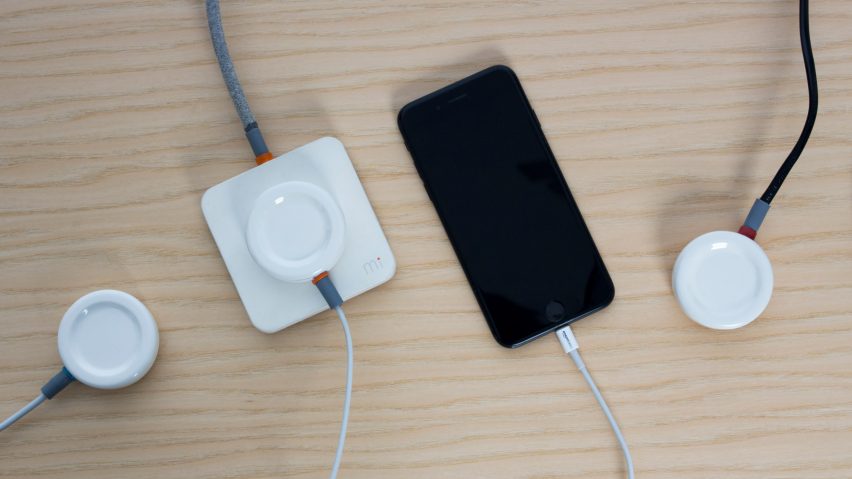Northumbria University design graduate Will de Brett has redesigned the everyday electrical plug, making it pin-less and stackable to accommodate numerous devices.
Mi Plug uses wireless charging to transfer electricity between the wall socket and plug, while both are fully encased in plastic.
This means there are no exposed metal contacts as in traditional AC power plugs, making the design much safer and easier to handle.
It is fully waterproof — so much so it could be used underwater — and there are no holes where children might be tempted to stick their fingers.
The disc-like plug simply slots into a matching depression in the wall outlet or charger. The plugs can also stack on top of each other, allowing a single socket to power up to eight devices with reduced clutter.
"This project is a response to the existing plug not tackling fundamental flaws such as bare pins, which can be a serious shock hazard," said de Brett.
"For the last 70 or so years, the way we've consumed power has changed radically. The devices we use have changed from being big and power-hungry appliances to small, energy-efficient, portable devices," he continued.
"With most of the electronics in the modern home being these small devices, it seemed strange to be powering them with heavy, cumbersome plugs."
Mi Plug was a runner-up in the UK heats of the James Dyson Award, which recognise the best in student design and engineering, as well as the John Lewis Design and Innovation Award at the New Designers showcase.
De Brett was inspired to create Mi Plug while looking at a toothbrush charger, which uses magnetic induction to transfer power through solid plastic.
He developed the design to work with this principle, placing a transmitter in the socket and a receiver in the plug. Each socket can transmit up to 100 watts of power, with a ring of lights to indicate when users are tapping its maximum capacity.
De Brett said that while the electrical plug and socket had changed since they first appeared in the late 19th century, previous redesigns had been "an exercise in form or aesthetics" that ignored substantial problems.
"Doing a fundamental redesign allowed me far greater freedom when it came to tackling the issues related to the plug, with aspects such as the rounded corners on the plugs and high-contrast colours on the sockets coming from comments raised by a series of elderly users," said De Brett.
"Families with young children were also very enthusiastic at the thought of a plug that would be safe for their children to be around. The size of the sockets and shape of the plugs were designed to give a sense of familiarity to the product."
De Brett, 23, graduated from Northumbria University's bachelors course in Design for Industry this year.
He next wants to improve Mi Plug's range and the amount of power that can be drawn, and is looking to partner with manufacturers. He hopes that a parallel standard could see Mi Plug installed alongside existing power outlets.
The winner in the UK James Dyson Award competition, where de Brett was runner-up, was Nicolas Orellana and Yaseen Noorani's O-Wind Turbine for urban environments. The joint runner-up was Bukki Adedapo's Gilaasi Finetunes spectacles, which change from sunglasses to clear prescription glasses at a tap using liquid crystals.
The UK winner now goes into an international competition. Previous overall winners include a skin cancer detector that avoids the need for biopsies and a folding paper bicycle helmet.

